The DepEd decided to remove Science subjects in Grades 1 and 2. This was reported in the January 24, 2012 Manila Bulletin article entitled, “DepEd drops ‘Science’ for pupils”. Education Secretary Br. Armin Luistro, FSC explained the rationale of dropping Science subjects in Grades 1 to Grade 2 by saying that such a move was to “decongest (the) Basic Education Curriculum (BEC) and to make learning more enjoyable to young learners.” He claimed that the new curriculum is “more child friendly” and is based on the idea that “we should be taking the students where they are.”
Basis for choice
The justification of DepEd’s head is unoriginal, especially since the word “decongest” was the same word used by former Sec. Raul Roco in item 6 of DepEd Order 25, series of 2002 on the Implementation of the BEC (http://www.deped.gov.ph/cpanel/uploads/issuanceImg/DO%2025_6-17-02_00001.pdf). This seemingly uncritical acceptance of a rationale that’s 10 years old makes one wonder: How exactly did DepEd come up with such a decision? And why, of all the subjects, was science singled out? Why couldn’t it have been any other subject? If DepEd really had to make a drastic choice, why couldn’t the choice have been M.A.P.E., considering that Grade 1 and 2 students are naturally active, and that one real practical challenge is to keep such students focused on seatwork?
One likely consideration is the prior 2002 decision to implement the BEC, which the current DepEd administration is only implementing as a matter of compliance to a previous DepEd commitment. Still, it’s not as if the policy is set in stone. If the present DepEd admin believes that implementing such a decision may have negative long-term impacts, they could invoke a precautionary stance and decide to hold the implementation while reviewing the issue further.

In addition, though it’s certainly within DepEd’s purview to make such a decision, in the process of deciding, did they even consult with the DOST on their opinions, albeit even cursorily? Perhaps DOST might have thought that postponing the teaching of Science until Grade 3 wouldn’t be a good idea.
Start them young
We often underestimate what children can do, but as a homeschool mom and educator, I feel that even young children should be taught science at least as early as kindergarten. There are many reasons for this. For one thing, young children are naturally curious. Second, children’s brains are capable of learning science. In addition, children come in all shapes and sizes, including those who are interested in and/or are gifted in the sciences. More importantly, science, which DepEd purports to be a less child-friendly subject, encourages children to learn more by allowing them to put in additional effort.
I have noticed that children are innately and naturally curious about the world around them, especially the physical world. Many parents would agree that children tend to ask about how things work, including natural phenomena. Some of them, like my son Sil, seem to have an endless trove of questions. Once I’ve finished answering one question, he’ll just have another one, and another one, until oftentimes, I lose patience or ask him to do something else. Suffice it to say, having a nature walk with a plant, animal, or insect book can be very informative and stimulating for little children.
It should be pointed out, though, that children don’t think like adults. However, this shouldn’t be a reason to refrain from teaching them science as Piaget’s theory on Cognitive Development Stages explains. Children ages 7 to 11 years (which includes the age range that Grade 1 to 2 students fall in) have been observed to not be inclined to think in an abstract manner, solve problems systematically, or use general principles to predict specific outcomes (deductive reasoning). More importantly though, these children can already think logically about concrete events, objects, or places. They can also reason inductively, that is, they can utilize specific experiences to conclude general principles. For example, one can easily explain Newton’s law of gravity by just repeatedly asking children to drop different things to the ground.
On another note, Gardner’s theory of Multiple Intelligences asserts that some children may have innate naturalist and logical intelligences, making such children like science and do well in them. One example is my son’s interest in science, which was brought about by his grandmother who showed him an old Reader’s Digest article on the body’s immune system entitled, “The war within us.” Building on this interest, I brought him to the Microbiological Research Sciences Laboratory (MRSL) in the UP Natural Sciences Research Institute (UP NSRI). There, he was able to wear a lab gown and put on protective bags on his shoes, but the most exciting part for him was when he looked at bacteria under the microscope. As a result, I am presently saving up for a microscope. Thus, the experience of other parents whose children love science begs the question: Why should such children have to wait until Grade 3 to immerse themselves in Science while their counterparts with non-science-related intelligences have already gained at least a 2-year head start?
Finally, Vygotsky’s Zone of Proximal Development (ZPD) explains the distance between what a child can do independently and what he/she can complete only with supervision. The concept explains that these two zones of competence overlap. In practice, when teaching a new skill, a teacher can build on something the child already knows while being challenging enough to require the child to exert some effort. Consequently, teachers shouldn’t merely take “the students where they are” but rather encourage students to go beyond what they presently know.
A science divide
Although the Basic Education Curriculum (BEC) is required by DepEd of all primary and secondary schools as communicated in DepEd order 43, series of 2002 (http://www.deped.gov.ph/cpanel/uploads/issuanceImg/DO%2043_08-29-02_00001.pdf ), the BEC is strictly enforced only in public schools. Though many private schools adopt the BEC, these schools still have the option to include science subjects in Grades 1 and 2 while public schools do not have such an option. Sil’s homeschool, the Master’s Academy, is a private organization that provides science books even at Grade 1.
The uneven BEC implementation since 2002 could be promoting a science divide between public and private schools. It’s tempting to predict that such a disparity may mean producing more future technical professionals or white collar workers from private schools while turning up more blue collar professionals from public schools. According to Daniel Levitin, expertise in any chosen field requires 10,000 hours of practice. Educator Erik Ericsson has something similar: his 10 year principle. He asserts that expertise is gained through a minimum accumulation of 10 years of dedicated practice and immersion.This means that children exposed to science subjects early already have an advantage over children who are exposed much later. If the previously mentioned inequality is proven, it would be alarming since the present work environment is increasingly more global, more science and IT-driven, and has implications on the economy. Either way, if such a science disparity exists, it would mean that more students will be science disadvantaged since the number of students in public schools far outnumber those in private schools. It was reported in the June 5, 2011 Manila Bulletin article entitled, ‘Campus Boom’ that 14.25M public school students were expected to enroll compared to a measly 1.22M students enrolling in private schools, or where the population of public school students is almost 11.7x higher than the population of private school students. As a practice, most academic institutions need to review their curriculum every 5 years, and since the BEC is already at least 5 years since establishment, it’s up for review and evaluation. At the very least, the implications of this plausible inequity need to be studied at the soonest.
An integration problem
Granted that Br. Armin assured the public that science concepts will still be integrated in the remaining non-science subjects in Grades 1 and 2, much of the implementation still rests on individual teachers. Unfortunately, teachers with little background in science might be uncomfortable or unsure about how to integrate science concepts in non-science subjects. This integrating strategy characterizes a broad-based curriculum approach, which is a particular teaching strategy most teachers may be unaware of or, worse, not know how to do. In fact, in page 4 of DepEd Memo 35, series of 2005, it was reported that “some (teachers) however, merely echoed what they learned; thus there are still many teachers who do not have enough knowledge about the key concepts and approaches of BEC.” http://www.deped.gov.ph/cpanel/uploads/issuanceImg/DO%20No.%2035,%20s.%202005.pdf This integrated approach requires teachers to logically teach several topics under one common theme; for example, a teacher can use the story of Goldilocks and the Three Bears to teach the number 3 (Mathematics) and temperature (Natural Science), texture (Art), taste (Culinary Arts), animal behavior (Biology), or even the concept of trespassing on private property (Law).
The integration will also require additional work, which many public school teachers can hardly do, what with their massive workload, shifting class schedules where one classroom is used by three separate classes in one grade level, abnormally large class sizes, and public school students’ 3 to 4-hour daily schedules, among so many considerations and factors. Simply stated, out of sight, out of mind, or what does not get measured (or monitored) falls by the academic wayside. Consequently, there’s the real danger of teachers not bothering to integrate science in their subjects at all.
Taking up the cudgels for science
It’s encouraging to know that Senator Pia Cayetano decided to take up this issue with DepEd. Still, considering the possible widespread effect of such a policy, we can exercise our rights as citizens and rally support for putting Science back in Grade 1 and 2 public school classrooms. If we succeed, this seemingly small step can redound to positive effects all around, like more future scientists from the ranks of little children.
References
Coffey, H. (n.d.). Zone of Proximal Development. Retrieved January 27, 2012 from http://www.learnnc.org/lp/pages/5075
Lind, K. (1998). Science in Early Childhood: Developing and Acquiring Fundamental Concepts and Skills. Paper presented at the Forum on Early Childhood Science, Mathematics, and Technology Education (Washington, DC, February 6-8, 1998). Retrieved January 27, 2012 from http://ecrp.uiuc.edu/v2n2/science-search.html
Malipot, I.H. (2011). Campus Boom. Retrieved January 27, 2012 from http://www.mb.com.ph/node/321369/campu
Malipot, I.H. (2012). DepEd drops ‘Science’ for pupils. Retrieved January 25, 2012 from http://www.mb.com.ph/articles/349141/deped-drops-science-pupils


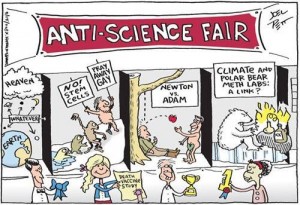
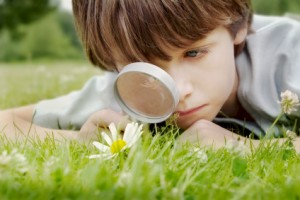
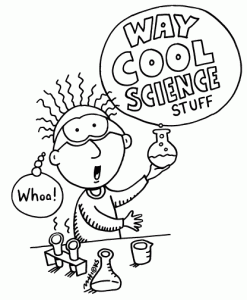
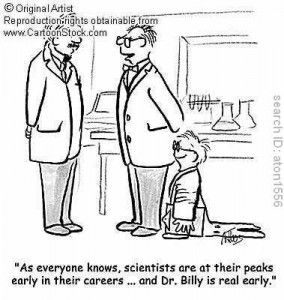
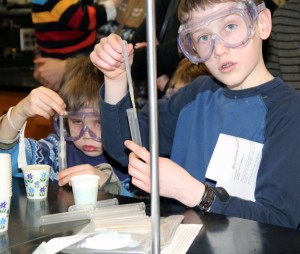
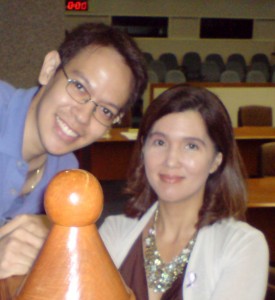

The sad part of this is that the new curriculum retains a "values education" program that declares secular humanism off limits to Philippine children.